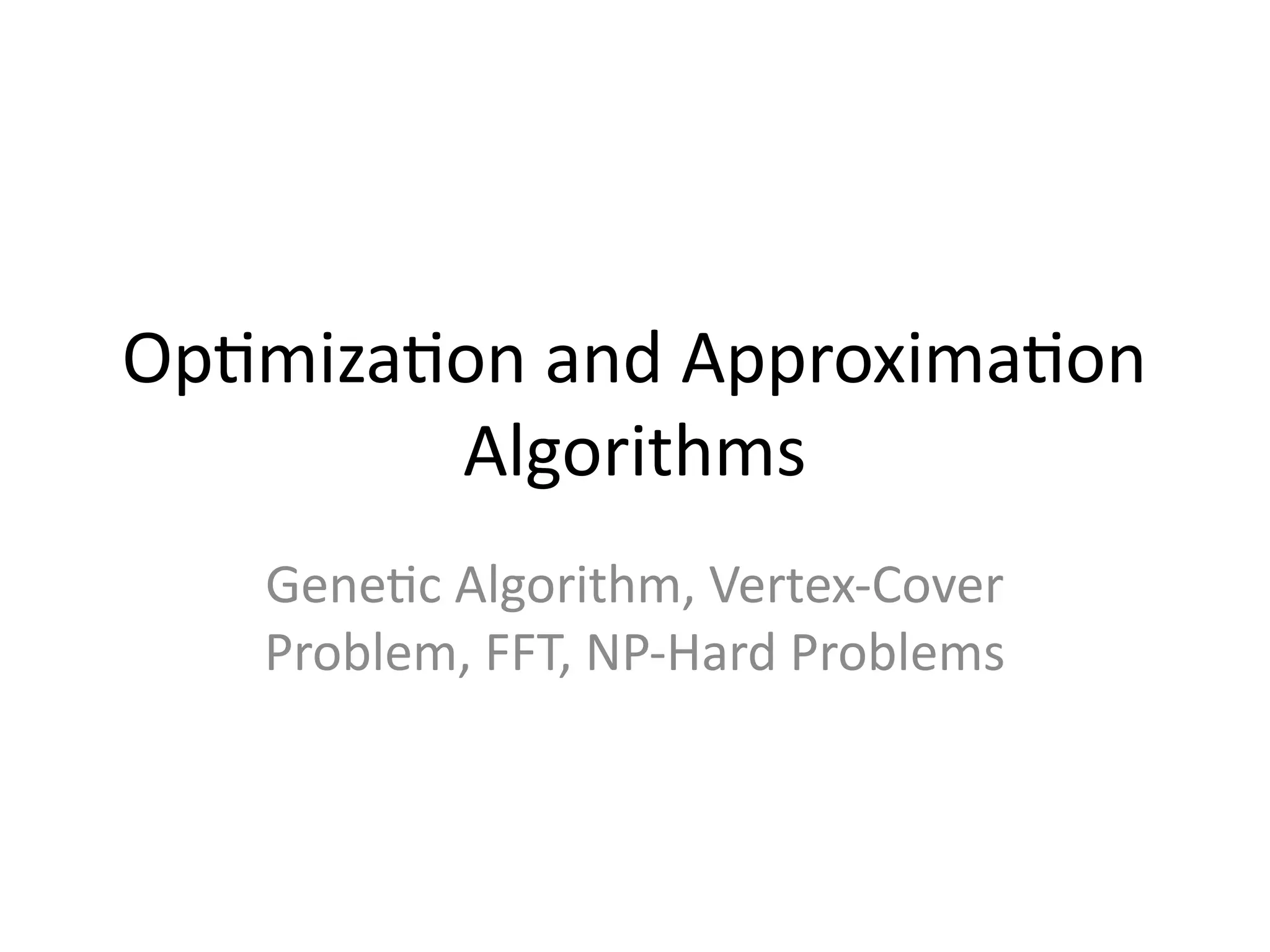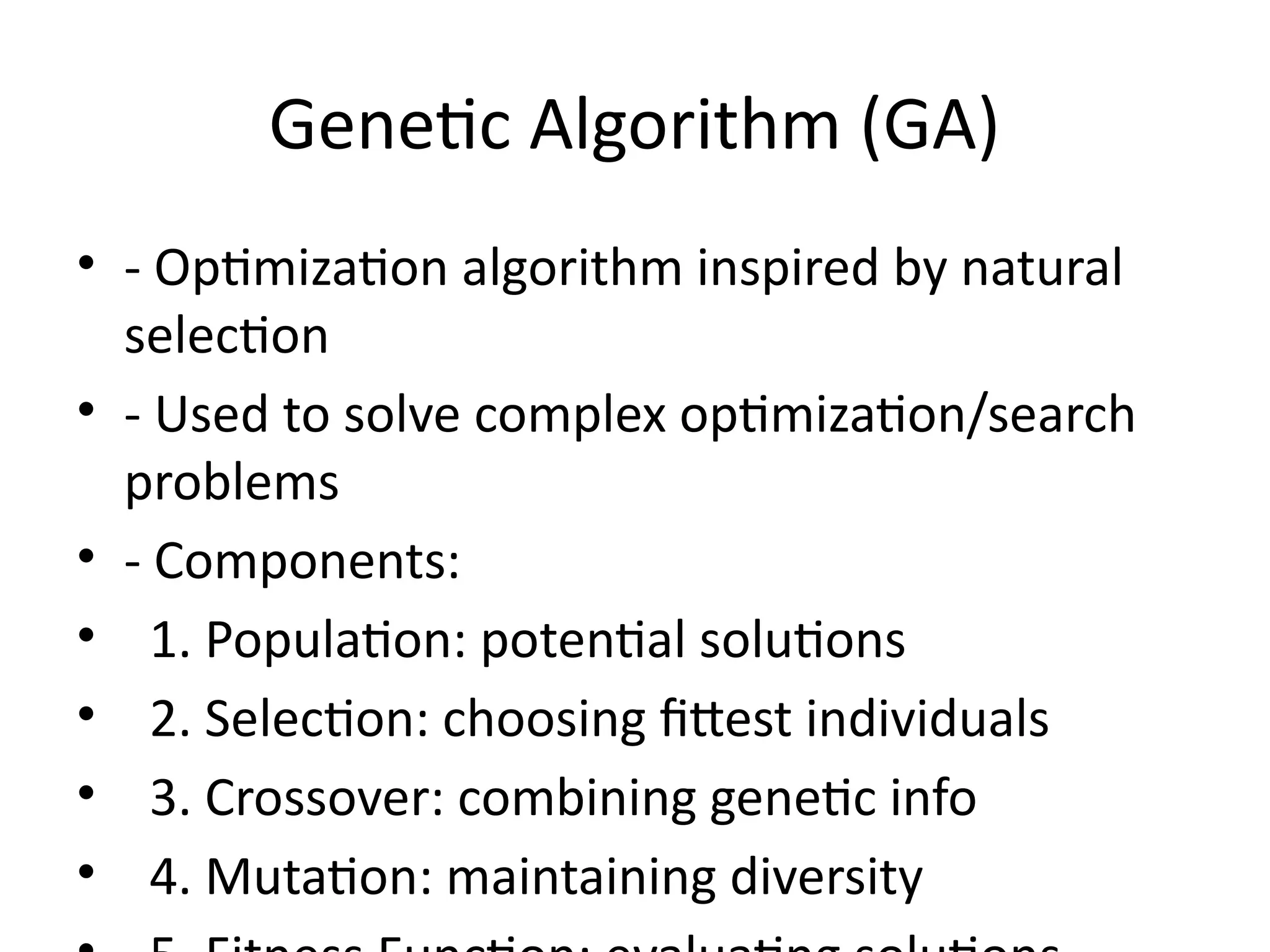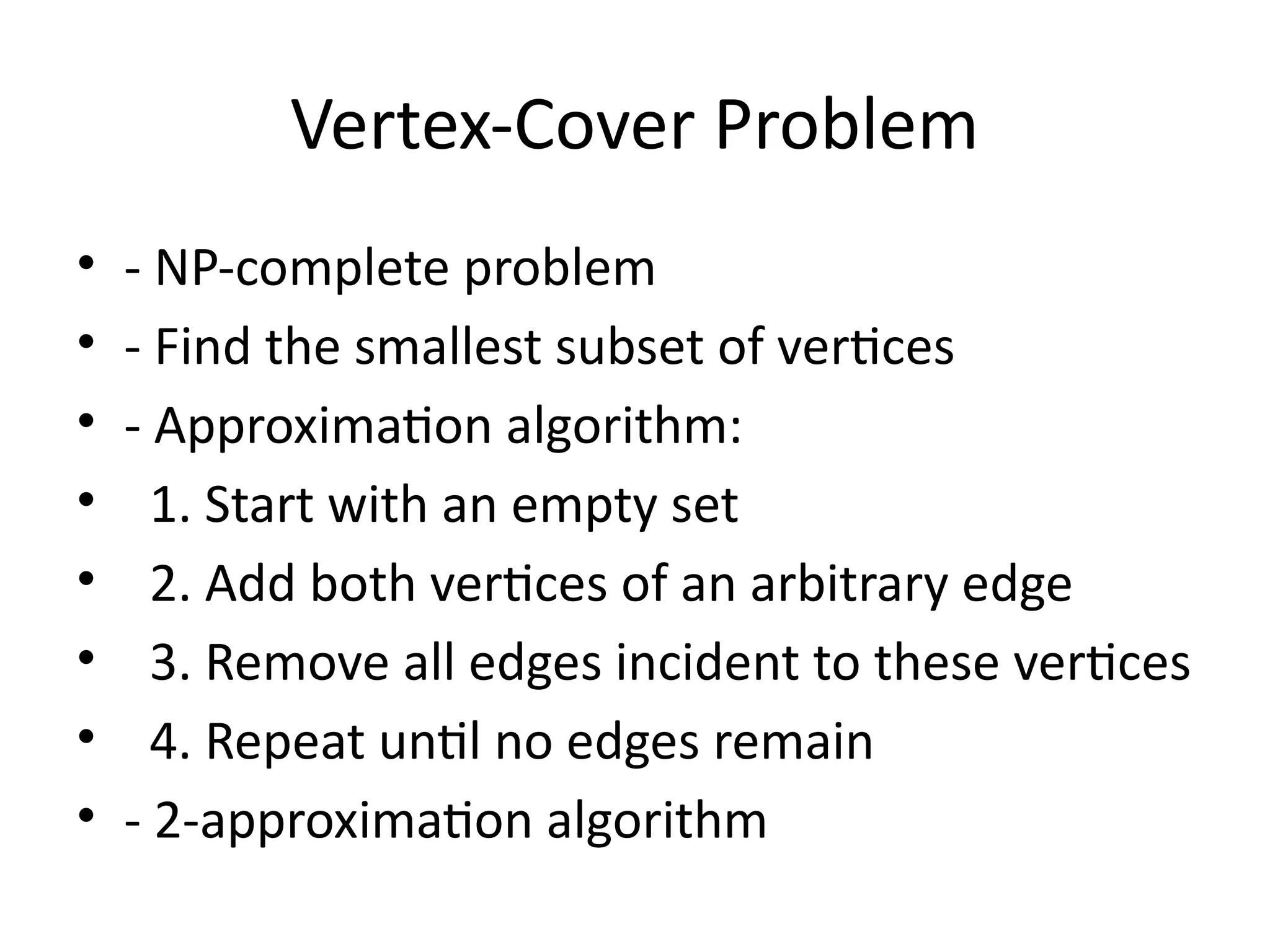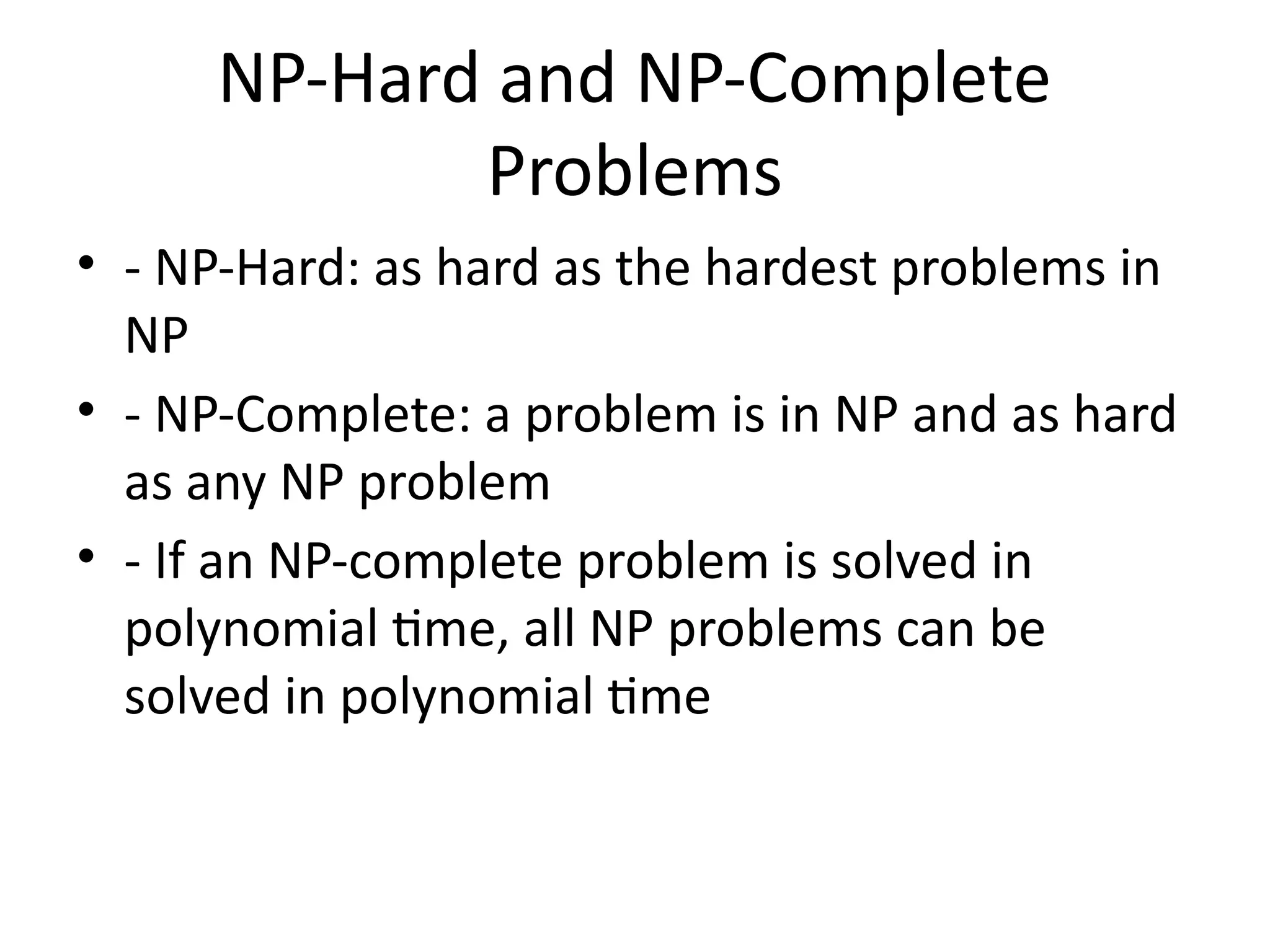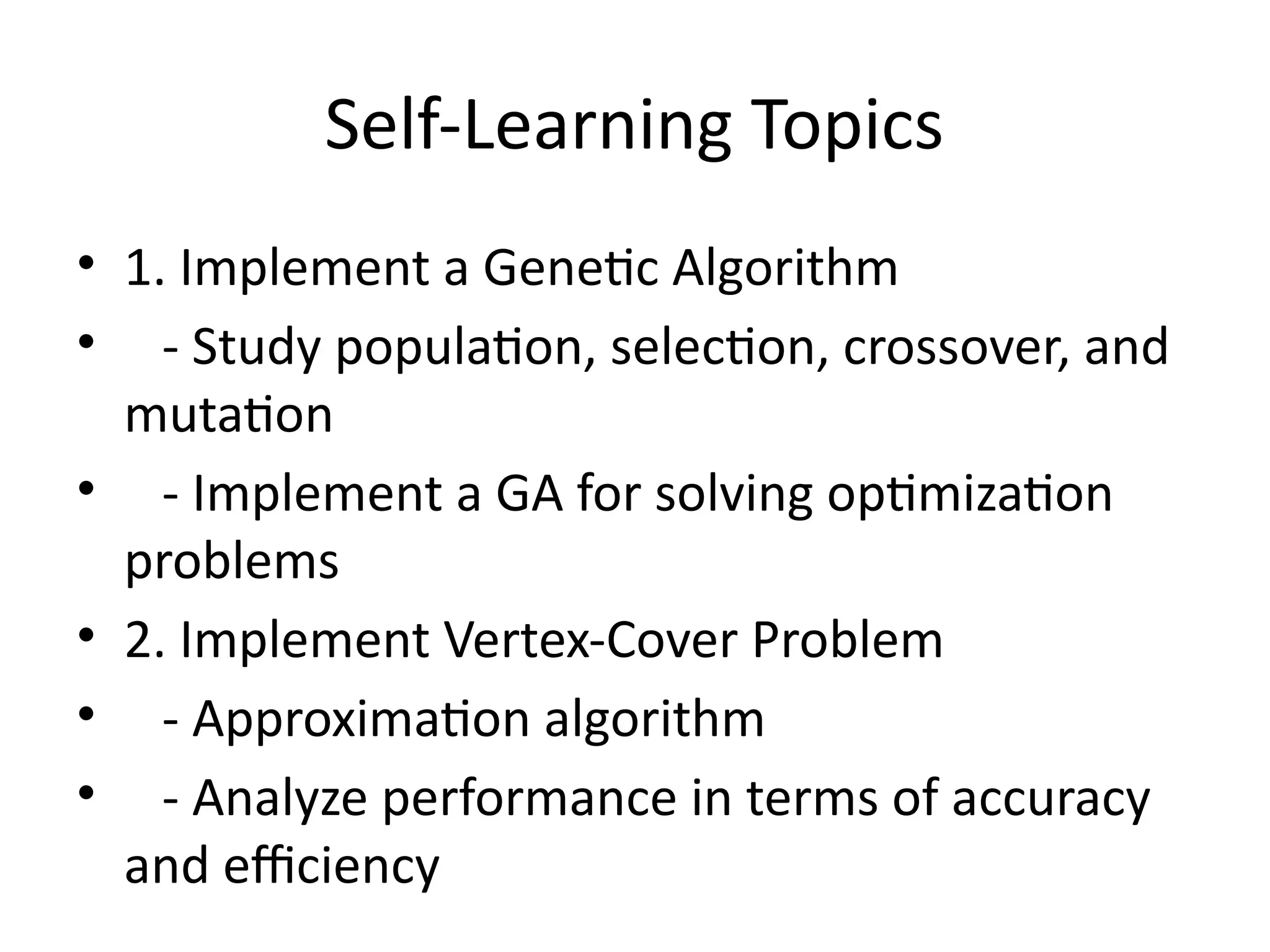The document discusses optimization and approximation algorithms, focusing on genetic algorithms (GA) and the vertex-cover problem. It describes the components of GA and outlines a 2-approximation algorithm for the vertex-cover problem, as well as the efficient Fast Fourier Transform (FFT) algorithm. Additionally, it touches on the concepts of NP-hard and NP-complete problems, emphasizing their significance in computational complexity.
